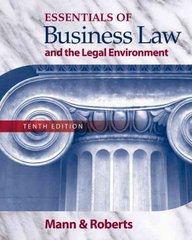1. Which of the following describes an economy with slack? High unemployment and low capacity a utilization. . High unemployment and high wage b growth. . Low unemployment and high interest c rates. . Low unemployment and high capacity d utilization. . 2. How do poor expectations on the part of companies affect borrowing during a recession? a Company borrowing increases because of reduced sales. . Because of low interest rates, recessions are great times for companies to invest in new b factories and capital equipment. . Recessions mean lower sales and production, so there is little desire for companies to borrow c during these times. . d Companies have incentives to lay-off workers during recessions, so borrowing increases. . 3. Which of the following best describes the intended effect of monetary policy during inflation? An increase in the money supply in the banking system means higher interest rates, less borrowing a and spending, and more employment and GDP. . A decrease in the money supply in the banking system means less borrowing and spending, and b slower economic and job growth. . An increase in the money supply in the banking system means lower interest rates, more borrowing c and spending, more employment and increased GDP. . d . A decrease in the money supply in the banking system means less borrowing, but more spending, job, and economic growth. 4. Which of the following does not take place when the Federal Reserve System sells Treasury bills to member banks? The price of Treasury bills a decreases. . b Banks have less money to lend. . c The federal funds rate decreases. . d The interest rate on Treasury bills . increases. 5. Which of the following is an advantage of monetary policy over fiscal policy? Because monetary policy focuses on the federal funds rate, and involves fewer decision makers, it a takes less time to enact than fiscal policy. . Monetary policy can be directed to address the needs of a specific region in the country that is b particularly hard-hit by recession. . c Fiscal policy can more easily adjust to changes in the economy than monetary policy. . d Monetary policy may not be as effective as fiscal policy when inflation is high. . 6. What would the Federal Reserve System do when the economy has a lot of slack, consumer spending is decreasing sharply, payroll employment is decreasing by an average of 100,000 jobs per month, and there is deflation? a Increase the federal funds rate target. . Increase the discount rate, but decrease the prime b rate of interest. . c Decrease the money supply to slow deflation. . d Buy Treasury bills from member banks . 7. What should the Federal Reserve System do to increase the federal funds rate? Increase the discount a rate. . Buy Treasure bills from b banks. . Sell Treasury bills to c banks. . Increase the reserve d requirement. . 8. What is a credit crunch? a Companies borrow so much during times of rapid economic growth that credit becomes exhausted. . b It is when consumers won't borrow during a recession due to fear of income and job loss. . The Federal Reserve System won't increase the supply of money in the banking system fast enough C to keep up with bank lending. . d Banks are reluctant to lend during a recession because they are worried about losing assets. . 9. How can the Federal Reserve System use the reserve requirement to decrease the supply of money in the banking system? a Decreasing the reserve requirement stabilizes banks so they can make more loans. . b Increasing the reserve requirement means that banks have less money to lend. . c Increasing the reserve requirement means that banks have to keep less on reserve. . Decreasing the reserve requirement allows banks to increase the amount of lending, so there is not d as much money in a typical bank. . 10. What can the Federal Reserve System do to correct a credit crunch? a Lower the reserve requirement to encourage more lending at higher interest rates. . b Encourage companies and consumers to borrow by lowering the discount rate. . c Keep selling T-bills to drive up interest rates so bank lending is more attractive. . Keep buying T-bills from member banks to encourage banks to make loans to d consumers and companies.







